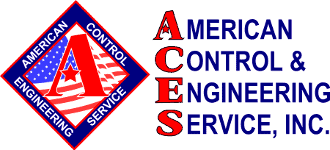THE MYSTERY
A correctional facility was having problems with one of their industrial, horizontal-running dryers. The Case of the dead dryer drum. The dryer drum refused to budge. The customer had pressed the reset button with no effect, so they called in the experts at ACES.
THE CLUES
On the scene, the first thing the ACES Control Systems Investigator (CSI) did was to examine the power, which wasn’t circulating where it should have been, and when he pushed the reset button nothing happened. He traced out the electricity again, reviewed the electrical drawings, but still couldn’t find the source of the problem.
The CSI pushed the reset button one last time — this time harder — and felt it give a little more. The drum swung into motion again, which showed that the drum motor was tripping on the overloads.
THE PERP
These overloads were original to the machine, of a 1974-75 vintage, consisting of a metal alloy that melts and disconnects the circuit if it gets too hot.
THE SOLUTION
The CSI replaced the obsolete overload with a much more sensitive modern overload. He upgraded the overloads on the exhaust blower motor and combustion blower motor as well. After the upgrade the drum motor was rotating right on cue, but the exhaust motor kept tripping, even at the correct amperage. The CSI set the amperage overload a bit higher, which solved the problem. He did a final check and left for the day.
NOT SO FAST
A week later the customer called to report that the exhaust motor was tripping overloads again. They had to crank the overload setting to 85 amps to keep it from tripping — this on a 65 amp motor.
MORE CLUES
When the CSI returned to the scene and checked it with his amp meter, he discovered that the motor was running up to about 200 amps on “inrush”, a phenomenon where the initial volts and amperage spike, but subside to normal in just a few seconds.
The exhaust motor was a large one, but even so, the inrush shouldn’t have been going on for over a 10 second period and overloading the system, as it was. The inrush on the other two motors was higher than normal, but still quick enough to resolve without tripping the overloads.
The CSI confirmed:
- That the leads were good
- All three legs checked out fine on the three-phase motor
- It was not shorted out
- Everything was grounded properly
There was just a very slow inrush on the exhaust motor.
The CSI related the puzzle to a senior CSI who said,
“You know what, something else that could cause this is the main power for the transformer servicing the whole building — it may be that the transformer is undersized or malfunctioning.”
A check of the motor startup confirmed that the entire amp draw and voltage would dip and then come back up, pointing to a problem with the transformer for the whole system.
THE FINAL SOLUTION
ACES offered to open up the transformer and test it, but the customer preferred instead to ratchet up the amp rating for the exhaust motor overload and keep the dryer running that way. ACES recommends against circumventing safety mechanisms — which in this case could lead to melted windings and a burnt-out motor — but for the time being the dryer is spinning again.
